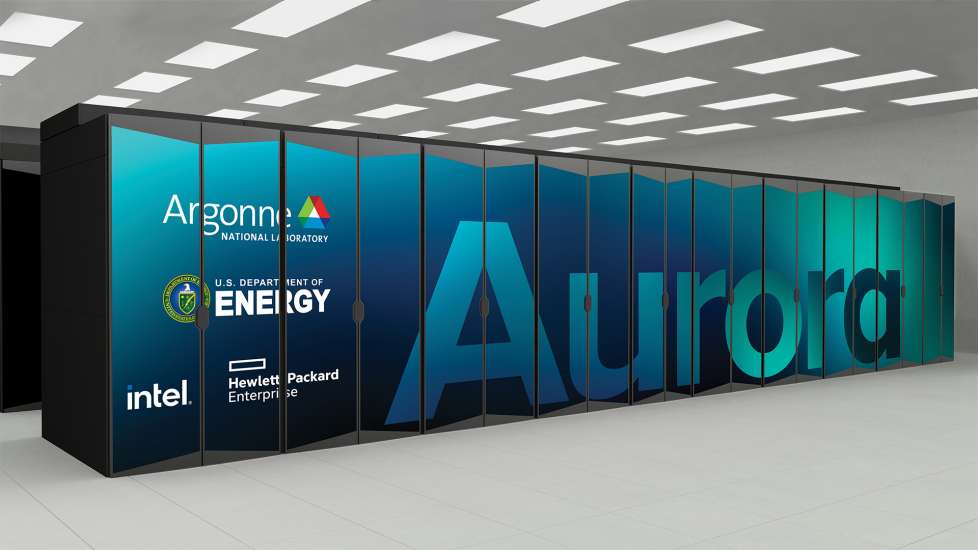Unlocking the Future of Science: Aurora, the World’s First Exascale Supercomputer

The upcoming deployment of Aurora, the first exascale supercomputer in the US, has the potential to revolutionise scientific research. The Aurora Early Science Program (ESP), established by the Argonne Leadership Computing Facility (ALCF), aims to prepare the research community for the new architecture’s scale and capability. The ESP has awarded pre-production time and resources to diverse projects that span high-performance computing (HPC), high-performance data analytics, and artificial intelligence (AI), expanding the realm of possibilities for scientific endeavours.
The Argonne Leadership Computing Facility (ALCF) is at the forefront of the nation’s efforts to deliver future exascale computing capabilities, enabling large-scale computing projects aimed at solving some of the world’s most complex problems in science and engineering. Researchers from universities, industry, and government agencies will have access to ALCF computing resources, ensuring that Aurora’s extreme scale and performance levels can be put to good use.
Upon its arrival, Aurora will feature several new Intel technologies, including high-bandwidth memory (HBM) and Intel Data Center GPU Max Series processors. Each node will offer scaling efficiency with eight fabric endpoints, unified memory architecture, and high bandwidth, low-latency connectivity. The system will support ten petabytes of memory for the demands of exascale computing.
Aurora users will also benefit from Intel Distributed Asynchronous Object Storage (DAOS) technology, which alleviates bottlenecks involved with data-intensive workloads. DAOS, supported on Intel Optane Persistent Memory, enables a software-defined object store built for large-scale, distributed Non-Volatile Memory (NVM).
The system will build upon HPE Cray Shasta supercomputer architecture, which incorporates next-generation HPE system software to enable modularity, extensibility, flexibility in processing choice, and seamless scalability. Cray ClusterStor E1000 parallel storage platform will support researchers’ increasingly converged workloads by providing a total of 200 petabytes (PB) of new storage.
Once Aurora is operational, it will be optimised to support the converged simulation science and new data-intensive workloads. The Argonne team will depend on the oneAPI programming model designed to simplify development on heterogeneous architectures.
The Aurora supercomputer has the potential to enable unprecedented levels of innovation and discovery in engineering and scientific research, bringing us closer to a brighter and more sustainable future. With advanced simulations and predictive modelling, Aurora could help us tackle some of the world’s biggest challenges, from developing new treatments for diseases to designing more sustainable and efficient systems for energy, transportation, and beyond.
In addition to the practical applications, the Aurora supercomputer will also push the boundaries of scientific research, helping us understand the universe and unlocking mysteries that have perplexed scientists for decades. It will accelerate our ability to analyse data and make more informed decisions in a variety of fields.
Aurora Delays, Borealis Sneak Peeks
Aurora has faced multiple delays in its deployment, which was originally planned for 2018. The system was initially based on the discontinued Xeon Phi processor family, and later replaced with another design that was intended to be delivered as the first exascale system in 2021. However, due to delays in Intel shipping its Sapphire Rapids Xeon Scalable processors, the launch of Aurora has been postponed.
To give researchers and the public a taste of what is to come, Intel has launched a smaller-scale version of Aurora, known as Borealis. Borealis is made up of 128 server blades, each powered by two of Intel’s 4th Gen Xeon Scalable processors and six Data Center Max Series GPU accelerators. This smaller version is meant to replicate the behaviour of Aurora and is being used to test hardware and software, as well as work through technical issues to ensure a successful deployment of Aurora.
Despite the delays, Intel remains committed to delivering the powerful Aurora supercomputer. When completed, Aurora will be the size of two basketball courts and weigh 600 tons, making it one of the fastest and most powerful computers in the world. The system will be a collaborative effort between Intel, Hewlett Packard Enterprise, and the U.S. Department of Energy, and will help advance research in cancer, neuroscience, aircraft design, high-energy physics, and other areas of great importance. With more than 10,000 server blades, Aurora will offer unparalleled computing power and pave the way for groundbreaking scientific discoveries and innovations.
The Aurora supercomputer is a major milestone in the advancement in the field of scientific research and technology. Once it comes, its advanced computing power and AI capabilities have the potential to revolutionise numerous fields, from renewable energy to cancer research to aviation safety. With the Aurora Early Science Program already supporting a range of diverse projects, the possibilities for groundbreaking discoveries and innovations are virtually limitless.
The Aurora supercomputer is a testament to the power of collaboration between industry and academia, and it offers hope for a brighter and more sustainable future. While the full impact of Aurora remains to be seen, it is clear that this impressive machine will play a significant role in shaping the future of science and technology.





